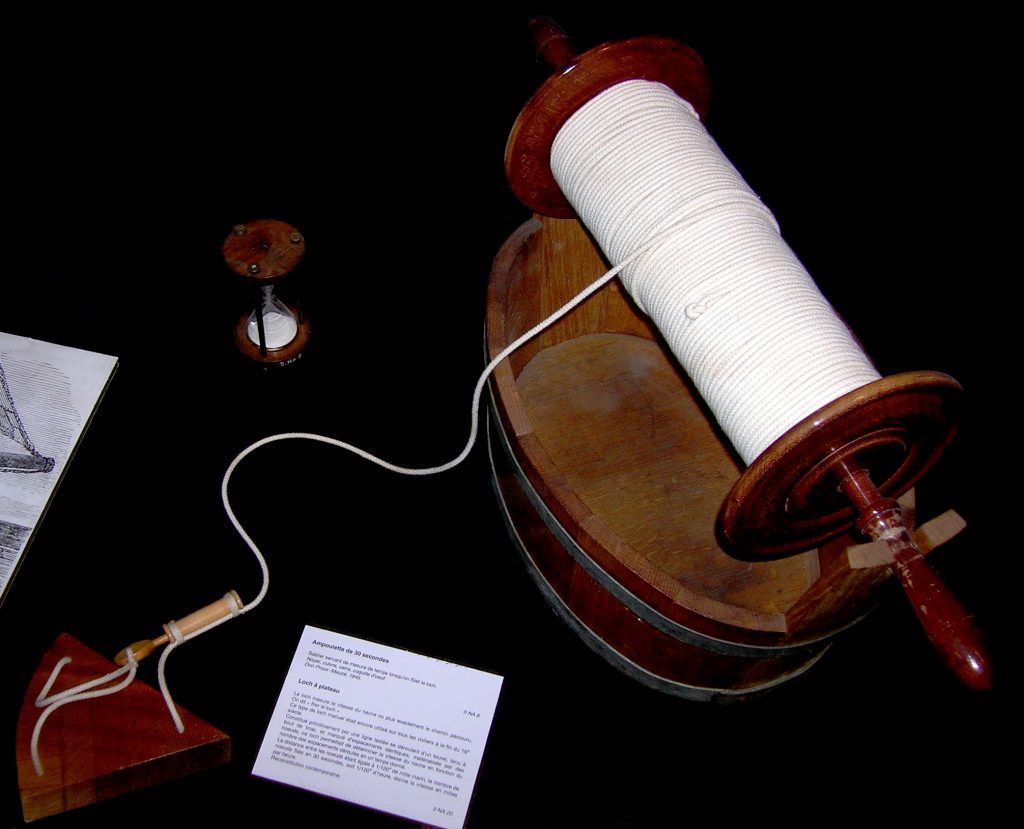2.2 Measuring Speed
In addition to their position and the depth of the water, it was also important for mariners to know their speed at sea. Early sailors used chip logs, which were planks of wood attached to long spooled lines containing knots at regular intervals. The plank was thrown overboard, while the spool remained on the ship. Once in the water, the plank encountered drag, which held the plank roughly stationary in the water while the attached line unspooled. The rate at which the line unspooled indicated how fast the ship moved away from the plank, and thus the ship’s speed. The rate at which the line unspooled was measured by counting the number of knots that passed through the sailor’s hands in a certain amount of time. Since it was originally measured as the number of knots per unit time, speed over water traditionally uses the unit of “knots” to indicate speed. One knot (kt) = 1 nautical mile per hour = 1.15 mph = 1.85 kph.

one knot (kt) = 1 nautical mile per hour = 1.15 mph = 1.85 kph

